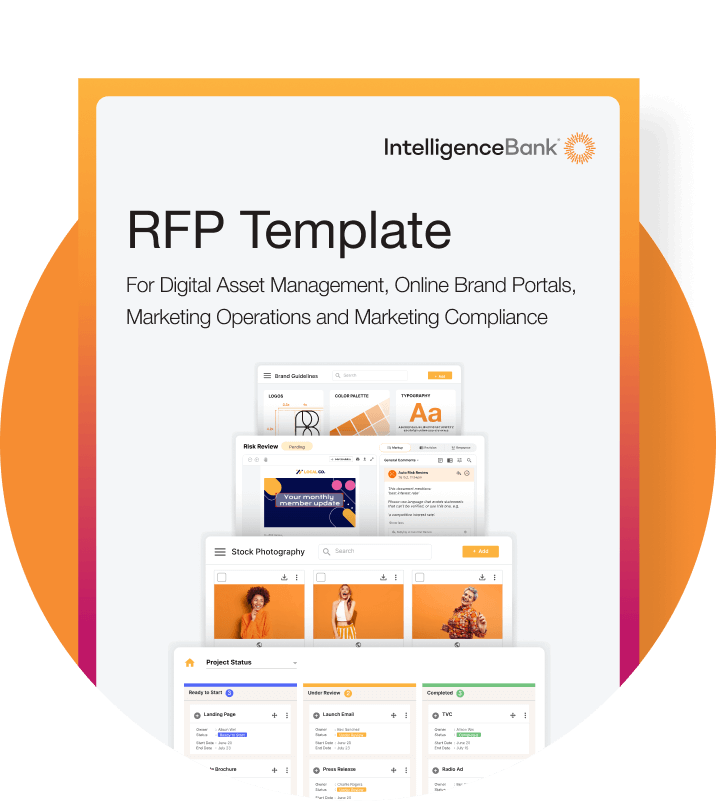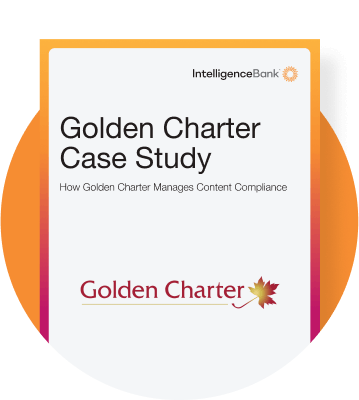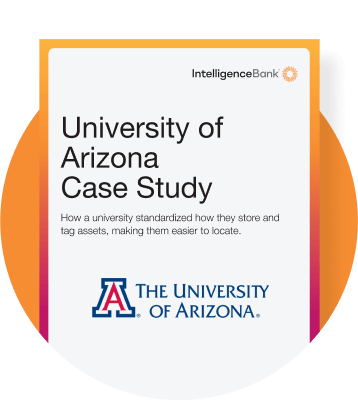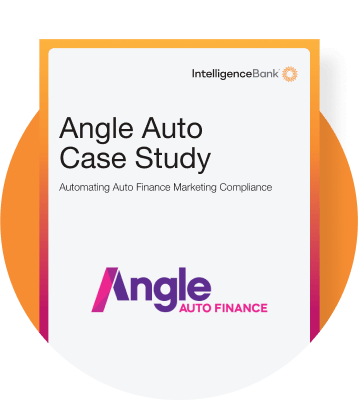Online Digital Asset Management (DAM) is a cloud-based platform that acts as a single source of truth for all your brand’s marketing content. Far more than just cloud storage, a DAM system uses metadata tagging, automation and intelligent workflows to organize, secure and distribute assets like images, videos, audio files and documents at scale.
Digital asset management software also makes marketing content useful for teams outside marketing. Using your DAM, teammates from other departments can find, edit and distribute content in one seamless system. They can also use the DAM jointly with marketing to review and approve marketing content.
For modern businesses that are overwhelmed by AI-assisted content volume, a DAM can transform digital content from a source of chaos into a strategic advantage. By providing instant access to approved creative resources, a DAM accelerates time-to-market, helps ensure brand and legal compliance and delivers measurable ROI by eliminating the productivity drains of searching for and recreating lost files.
In this guide, you will learn about:
- Core DAM capabilities that go beyond storage, like AI tagging and automated workflows.
- How DAM drives value across industries, including regulated sectors like healthcare and finance.
- Benefits for remote teams – from smooth collaboration to secure access.
- Metrics to measure ROI and a framework for successful rollout.
- Common pitfalls to avoid for strong adoption and lasting results.
Core Capabilities: What Can a Modern DAM Platform Actually Do?
An online digital asset management platform transcends basic file storage by introducing a layer of intelligence and automation. It’s designed to manage the entire lifecycle of a digital asset, from creation and approval to distribution, analysis, and archiving. This is achieved through several core capabilities that work in concert.
Intelligent Metadata and Search
At the heart of every DAM is a robust metadata framework. Unlike folder-based systems that rely on human memory, a DAM automatically categorizes files with searchable keywords, descriptions, and custom fields. This makes assets instantly discoverable, eliminating the “hunt through nested folders” that plagues shared drives.
Automated Workflows and Version Control
DAM systems replace chaotic email threads and manual reviews with structured, automated workflows. You can route assets for approval, collect feedback directly on the file and maintain a clear version history. This ensures everyone always uses the latest, approved asset, preventing costly errors.
AI-Powered Efficiency
Modern DAMs leverage AI to automate tedious tasks and unlock new levels of creativity. Key AI features include:
- Image, Video, and Audio Tagging: Automatically identify and tag objects, scenes, brands, and locations.
- Facial Recognition: Quickly locate specific people across thousands of images and videos.
- Automatic Transcription: Generate text transcripts from video and audio files for repurposing and accessibility.
- Smart Cropping: Instantly resize and crop batches of images to a defined focal point for different channels.
Granular Security & Permissions
Protect your valuable brand IP with security that goes beyond a simple password. DAMs offer role-based permissions, ensuring users only see and access what they’re supposed to. Comprehensive audit trails track every view, download, and share, which is indispensable for compliance.
Streamlining Day-to-Day Operations: The DAM Workflow in Action
While the strategic benefits are clear, the true value of a Digital Asset Management system is realized in the daily grind of marketing and creative teams. It eliminates the small, recurring inefficiencies that cumulatively drain productivity and slow down entire campaigns. By looking at a common workflow, we can see how a DAM transforms a fragmented process into a seamless, automated operation.
Consider a typical asset request without a DAM:
A salesperson needs a product image for a client presentation. They email a marketing manager who spends 15 minutes searching through a shared drive and their own downloads folder. They find three similar versions of the image, aren’t sure which is the latest and forward them all. The salesperson uses an outdated version, potentially presenting incorrect information.
The same request with a DAM:
The salesperson goes directly to the DAM portal. There is no need for them to submit a request. They search for the product name, filter by “product shot” and “latest version,” and instantly find the single, approved asset. They download it directly or copy a secure, expiry-enabled link to share with the client. The entire process takes 30 seconds, without involving other teams or risking brand compliance.
This efficiency is replicated across countless daily tasks:
- Onboarding new team members by giving them instant access to the brand library.
- Managing global campaigns with region-specific folders and permissions.
- Gathering feedback via shared review links with built-in commenting, eliminating messy email threads.
This operational clarity allows teams to shift their focus from administrative tasks to high-value strategic work, fundamentally changing the pace and quality of their output.
Industry Specific Benefits: How DAM Creates Value Across Sectors
While any organization with digital content can benefit from a DAM, its value becomes particularly clear when applied to specific industry challenges. Different sectors face different pressures. For example, strict regulatory compliance in healthcare to rapid campaign launches in retail. The table below illustrates how online DAM systems are tailored to address these specialized needs.
| Phase | Key Activities | Outcome |
|---|---|---|
| 1. Plan and Organize | Conduct stakeholder interviews; inventory key assets; define metadata schema. | A clear strategy and file structure plan tailored to your business. |
| 2. Pilot and Validate | Migrate a controlled set of assets; train super users; gather feedback. | A refined, user-tested system ready for scaling. |
| 3. Scale and Integrate | Department-wide rollout; integrate with CMS, CRM and design tools. | Widespread adoption and seamless workflows across the tech stack. |
The most successful implementations also track intangible benefits, such as improved brand consistency, enhanced cross-team collaboration and reduced organizational risk.
To discover more information about calculating your potential ROI, download our DAM ROI Report below.
Common Pitfalls and How to Ensure DAM Adoption Success
While the benefits of a DAM system are substantial, its success hinges on avoiding common implementation mistakes that can undermine adoption and ROI. Many organizations focus solely on technical features while overlooking the human and procedural elements that determine long-term value. Recognizing these pitfalls beforehand is your best strategy for ensuring a smooth rollout and achieving the productivity gains you expect.
Here are the most critical challenges and how to overcome them:
- Poor Metadata Strategy: The most common reason DAMs fail is inadequate metadata and tagging. Without a consistent, well-planned taxonomy, assets become impossible to find, replicating the very problem the DAM was meant to solve.
- Solution: Invest time upfront to design an intuitive scaffold that reflects how your teams actually search for content.
- Inadequate Change Management: Simply launching a new platform without proper training and support leads to confusion and low user adoption.
- Solution: Develop a phased training program, identify “DAM champions” in each department, and provide ongoing support to build confidence and proficiency.
- Overly Complex Permissions: While security is crucial, creating a labyrinth of access rules can frustrate users and hinder collaboration.
- Solution: Start with simple, role-based permission groups and only add complexity where absolutely necessary for security or compliance.
- Operating in a Silo: A DAM that isn’t integrated with the tools your team uses daily (like your CMS, CRM, or Adobe Creative Cloud) becomes a detour rather than a destination.
Solution: Prioritize integrations with core business systems to create seamless workflows and make the DAM an indispensable part of daily operations.
Key Questions to Gauge Your Readiness
Before implementation, ask your team:
- Do we have a clear owner and management plan for the DAM?
- Have we involved key stakeholders from marketing, creative, and IT in planning?
- Is our metadata structure designed for how people search, not just how they file?
Of course the right vendor will hold your hand every step of the way throughout this process.
The Strategic Impact: DAM as a Driver of Digital Transformation
Online Digital Asset Management has evolved from a simple storage solution to a strategic platform that actively drives digital transformation across organizations. In our content-driven environment, where brands must deliver consistent experiences across multiple channels while maintaining agility, a DAM system serves as the central nervous system for your digital ecosystem. It connects people, processes, and technology to create a more responsive, efficient, and data-driven organization.
How Does a DAM Enable Digital Transformation?
- Breaks Down Departmental Silos: By providing a single source of truth for all digital assets, DAM eliminates information hoarding and enables seamless collaboration between marketing, sales, creative, legal, and external partners.
- Accelerates Content Velocity: Automated workflows and instant access to approved assets dramatically reduce the time from creative concept to market execution, giving organizations a crucial competitive advantage.
- Enables Scalable Personalization: With all assets organized and accessible, teams can quickly assemble personalized content for different audiences, regions, and channels without starting from scratch.
- Future-Proofs with AI Integration: Modern DAM platforms serve as the foundation for implementing AI technologies, from automated tagging to content analysis, ensuring your organization stays ahead of technological curves.
When Should You Invest in a DAM?
The right time to implement a DAM system is before content chaos becomes a critical business risk. Consider these indicators that your organization is ready:
- You’re managing thousands of assets across multiple locations or teams
- Content creation velocity is increasing, but findability is decreasing
- Brand consistency issues are becoming noticeable to customers
- You’re preparing for significant growth, mergers, or market expansion
- Remote work has made your current file storage solutions inadequate
For regulated industries, the timeline is even more urgent. DAM becomes essential rather than optional when compliance risks outweigh implementation costs.





